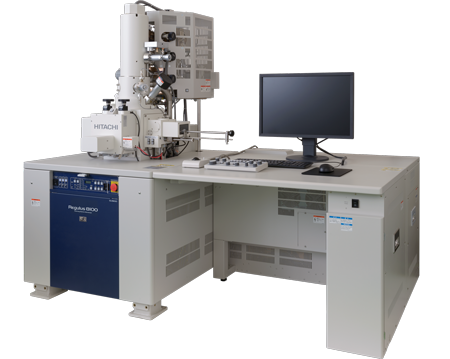Hitachi High-Tech Introduces New Field-Emission Scanning Electron Microscopes

Hitachi High-Tech has announced the introduction of the new Regulus series of field emission scanning electron microscopes (FE-SEM) on May 30. As a new brand for FE-SEMs, the Regulus series lineup comprises four models: the Regulus8100, developed as the successor to the SU8010, as well as the Regulus8220, Regulus8230, and Regulus8240, which extend the functions of the SU8200 series with the use of a common platform. The Regulus series offers enhanced functionality with improved resolution and operability.
Scanning electron microscopes (SEMs) are used to observe material structures in a diverse range of scientific fields, including nanotechnology, semiconductors/electronics, biology. and materials science. In recent years, cutting-edge science and technology around the world have been supported by advances in research into graphene and other new carbon materials expected to be applied to next-generation electronic devices, as well as polymeric materials and composite materials. SEMs used in the observation and evaluation of these materials must have low-accelerating-voltage imaging capabilities and high-sensitivity elemental-analysis capabilities to enable observation of surface microstructures as well as ultra-high-resolution imaging capacity. Moreover, SEMs must be able to consistently and reliably perform these functions.
With optimized electron optical systems, the new Regulus series features resolutions down to 0.9 nm in the Regulus8220/8230/8240 models and 1.1 nm in the Regulus8100 model"”an improvement of roughly 20% in resolution at 1 kV landing voltage compared with previous models. The Regulus series employs a novel cold-field-emission (CFE) gun optimized for high-resolution imaging at low accelerating voltages. This CFE gun makes it possible to magnify high-resolution images of up to 2 million times,*1 compared with 1 million times in previous models. User-support functions have also been enhanced so that the advanced performance of the series can be fully leveraged, including functions to assist the operation of the signal detection system for analyzing diverse types of materials, as well as device-maintenance functions.

































